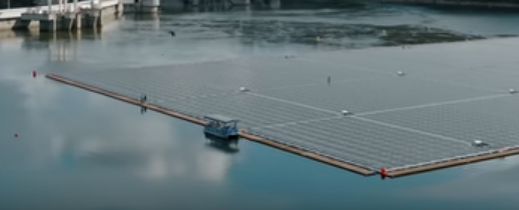In order to have an informed opinion on the practicality of electric vehicles you should understand how the electric grid actually works. This is going to be far from a complete study which could easily be a university class but it will explain the general concepts. Let’s get started.
On the most basic level the electric grid consists of:
- Sources of electricity
- A distribution network
- Consumers of electricity
Let’s look at each piece separately.
Sources
Traditionally we can think of sources as fairly large generating facilities such as hydroelectric dams, coal-fired power plants, nuclear plants, natural gas plants and diesel generators. There are other sources such as geothermal but that was the primary mix. Each has advantages and disadvantages.
Hydroelectric Dams
The weight of falling water turns generators to produce electricity.
Pro:
- Once constructed they tend to have low operating costs
- Their environmental impact is minimal
- Their energy output can quickly be adjusted to meet changing demand
Con:
- We are running out of rivers
Coal-fired Power Plants
In such a plant coal is burned to produce steam to run turbines which drive generators.
Pro:
- We have lots of coal
- They are cheaper to build than many alternatives
Con:
- Output power cannot be quickly changed taking hours to start up
- As with burning anything, carbon dioxide is added to the air
- Their air pollution is significant from sulfur in the smoke which produces acid rain
- Other pollutants include arsenic
Nuclear Plants
A nuclear power plant uses the energy from the decay of radioactive material to produce steam much like a coal-fired power plant.
Pro:
- There is on carbon dioxide or other pollutants emitted during normal operation
- Large amounts of energy can be produced with a small amount of fuel
Con:
- The output power of a nuclear plant cannot be quickly adjusted. It takes from hours to days to adjust it
- A fault at a nuclear power plant can release significant radiation into the environment
- Some of the “garbage” (radioactive waste) from normal operation of such power plants will need to be isolated from the environment for thousands or tens of thousands of years
- Nuclear power plants produce a lot of waste heat
- Construction is extremely expensive and can take many years
Natural Gas Plants
These plants work pretty much like a coal or nuclear plant.
Pro:
- While carbon dioxide is produced other pollutants are minimal
- Construction costs are significantly lower than alternatives such as nuclear
Con:
- Power output can be changed but it is not immediate typically resulting in them running in “hot standby” mode to meet peak demands
Diesel Generators
Basically a big diesel motor turning a generator.
Pro:
- Don’t require any special infrastructure
- Can be brought “on-line” relatively quickly
Con:
- Pollution issues including oxides of nitrogen as well as carbon dioxide
- Low efficiency producing more waste heat than electricity
Distribution Network
This is the most complicated part of the grid. The network must merge the energy produced by all the sources and deliver the needed energy at the correct voltage and frequency to all the consumers.
That might seem simple but it is not. For example, above I said a diesel generator can be brought on-line relatively quickly. But that “quickly” is measured in minutes. When you turn on a light or start your washing machine you expect things to happen immediately, a small fraction of a second, which is not the same.
What this means is that additional sources of energy beyond current demand must be running so that the grid only needs to adjust their contribution to the grid electronically. The result is that more generators must be operating continually to meet a spike in demand.
Consumers
Consumers include your house, businesses, industry, transportation, or, in other words, everything. None of these consumers expect to have to wait for “their” electricity. In many cases the cost of unreliable electric power can have big costs. If you have to wait an extra 30 seconds for you toast to be ready it is not a big issue but the power to a manufacturing plant going off for 30 seconds could interrupt an industrial process.
Until fairly recently there were no reliable large-scale ways to meet these demand peaks aside from having more production capacity running “just in case”. What has changed is that affordable battery storage has become available. The Tesla MegaPack is an example but other players are getting into this market.
This changes the whole game. It makes it possible to use PV solar, wind turbines and tide power as reliable contributors to the energy mix. While many say “wind isn’t reliable” and “solar only works during the day”, if you add enough storage capacity to the grid to moderate the peaks you can have a reliable grid with a much lower generation cost.



